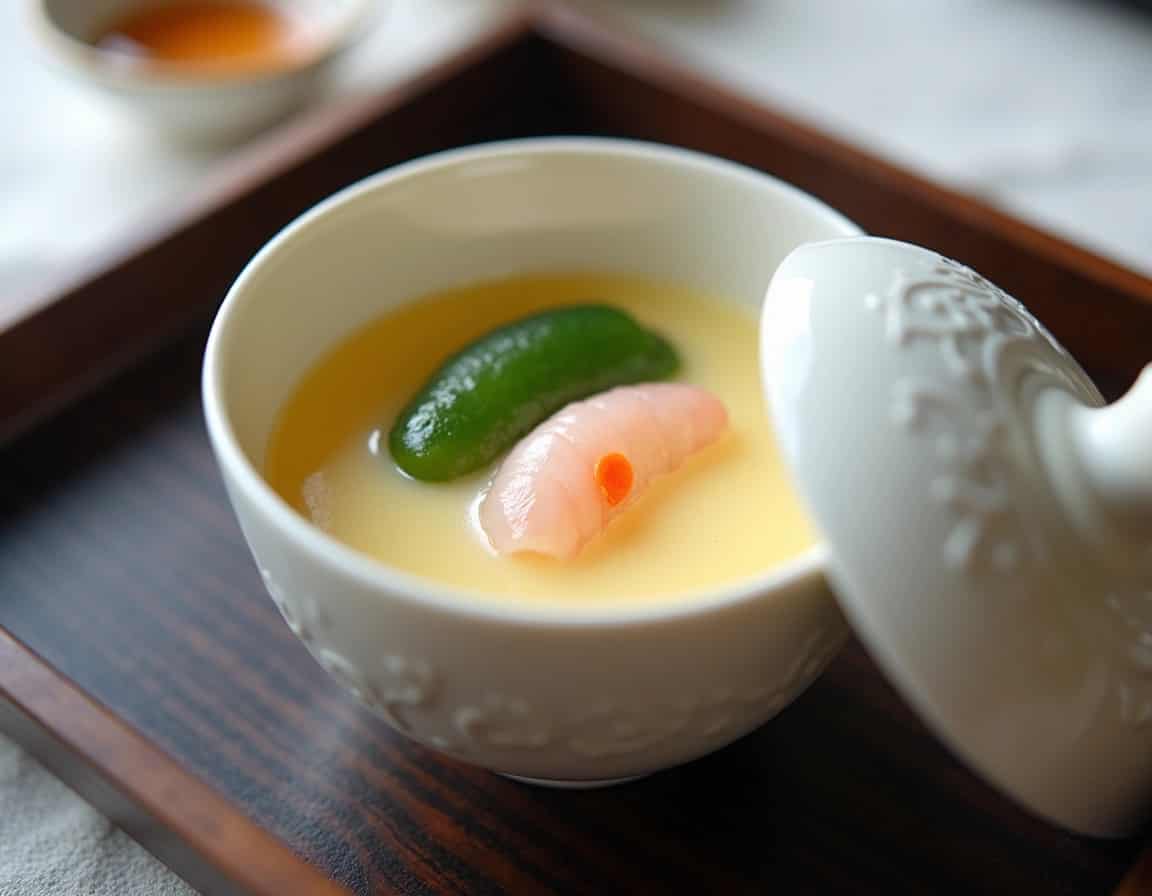
Chawanmushi
茶碗蒸し
- Country
- Japan
- Region
- All Japan
- Recipes
- 0 Recipes
Dish information
Chawanmushi, a delicate and savory steamed egg custard, is a cornerstone of traditional Japanese cuisine, renowned for its silky texture and subtle, umami-rich flavor. Its name translates literally to 'teacup steam,' referencing its preparation in a designated lidded teacup or small bowl set within a steamer. The custard base is made from eggs, dashi (Japanese soup stock), soy sauce, and mirin, strained multiple times to achieve its signature smooth consistency. While the basic custard remains consistent, the fillings can vary widely depending on region, season, and chef's preference, commonly including ingredients like chicken (often thigh meat), shrimp, kamaboko (fish cake), shiitake mushrooms, ginkgo nuts, and mitsuba (Japanese parsley). Chawanmushi is believed to have originated in Nagasaki during the Edo period (17th to 19th centuries), influenced by Chinese steamed egg dishes introduced through trade. It quickly spread throughout Japan, becoming a refined dish often served as part of a multi-course kaiseki meal or as a starter in traditional restaurants. Its understated elegance and comforting warmth make it a beloved dish, particularly appreciated for its gentle flavor and nutrient-rich composition, suitable for all ages. The presentation is key, with the delicate arrangement of ingredients often peeking through the translucent custard, topped with a vibrant garnish.
Timeline
Introduction of Chinese culinary techniques to Japan, influencing early steamed egg dishes.
First known records and development of Chawanmushi in Nagasaki.
Chawanmushi becomes a popular dish served in upscale Japanese restaurants.
Commercialization and widespread availability of Chawanmushi as a side dish in Japan.
Related recipes
0 recipesWe'll add related recipes for this dish soon.